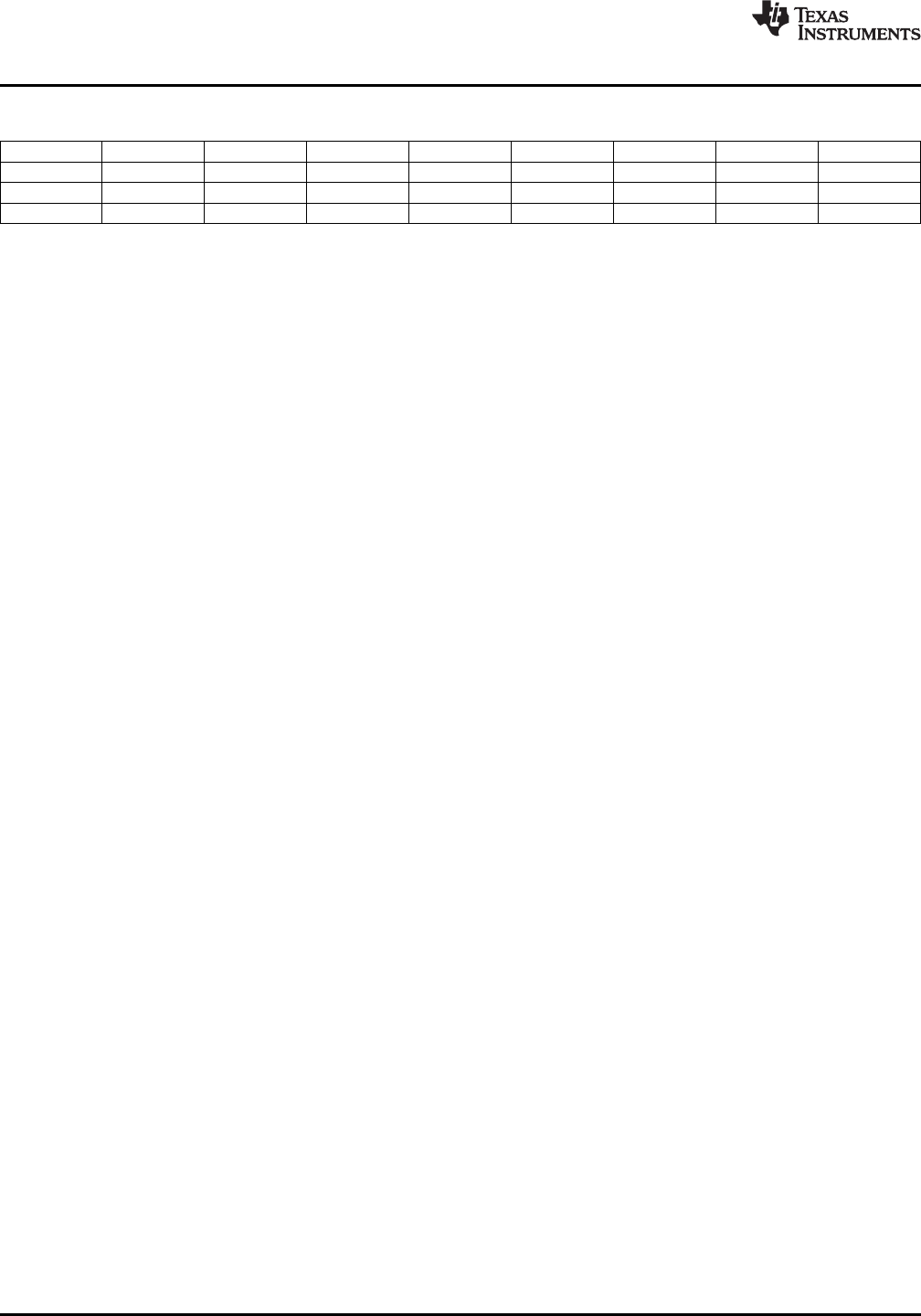Datasheet
Table Of Contents
- FEATURES
- APPLICATIONS
- DESCRIPTION
- PINOUT INFORMATION
- ABSOLUTE MAXIMUM RATINGS
- THERMAL INFORMATION
- RECOMMENDED OPERATING CONDITIONS
- ELECTRICAL CHARACTERISTICS
- TIMING REQUIREMENTS
- TYPICAL CHARACTERISTICS
- SYSTEM DIAGRAMS
- APPLICATION INFORMATION
- ECCENTRIC ROTATING MASS MOTORS (ERM)
- LINEAR RESONANCE ACTUATORS (LRA)
- AUTO-RESONANCE ENGINE FOR LRA
- OPEN LOOP OPERATION FOR LRA
- SMART LOOP ARCHITECTURE
- AUTO CALIBRATION
- WAVEFORM LIBRARIES
- WAVEFORM SEQUENCER
- LIBRARY PARAMETERIZATION
- REAL-TIME PLAYBACK (RTP) MODE
- MULTI-MODE INPUT PIN (IN/TRIG)
- DEVICE ENABLE
- CONSTANT VIBRATION STRENGTH
- EDGE RATE CONTROL
- CAPACITOR SELECTION
- MODES OF OPERATION
- BLOCK DIAGRAM
- GENERAL I2C OPERATION
- SINGLE-BYTE AND MULTIPLE-BYTE TRANSFERS
- SINGLE-BYTE WRITE
- MULTIPLE-BYTE WRITE AND INCREMENTAL MULTIPLE-BYTE WRITE
- SINGLE-BYTE READ
- MULTIPLE-BYTE READ
- REGISTER MAP
- DEVICE PROGRAMMING
- WAVEFORM LIBRARY EFFECTS LIST
- PCB LAYOUT RECOMMENDATIONS
- Revision History

DRV2605
SLOS825B –DECEMBER 2012–REVISED JANUARY 2014
www.ti.com
Control2 (Address: 0x1C)
Bit 7 6 5 4 3 2 1 0
Function BiDir_Input BrakeStabilizer SampleTime[1] SampleTime[0] BlankingTime[1] BlankingTime[0] IDissTime[1] IDissTime[0]
Type R/W R/W R/W R/W R/W R/W R/W R/W
Default 1 1 1 1 0 1 0 1
BiDir_Input Selects the input scaling the playback engine expects.
0: Uni-directional Input Mode
Braking is automatically determined by the feedback conditions, and applied when needed. Use of this
mode also recovers an additional bit of vertical resolution. This mode should only be used for closed-
loop operation.
Examples
0% Input → No output signal
50% Input → Half-scale output signal
100% Input → Full-scale output signal
1: Bi-directional Input Mode (default)
This mode is compatible with traditional open-loop signaling, and also works well with closed-loop mode.
When operating closed-loop, braking is automatically determined by the feedback conditions, and
applied when needed. When operating open-loop modes, braking is only applied when the input signal
is less than 50%.
Open Loop Mode (ERM and LRA) Examples
0% Input → Negative full-scale output signal (braking)
25% Input → Negative half-scale output signal (braking)
50% Input → No output signal
75% Input → Positive half-scale output signal
100% Input → Positive full-scale output signal
Closed Loop Mode (ERM and LRA) Examples
0% to 50% Input → No output signal
50% Input → No output signal
75% Input → Half-scale output signal
100% Input → Full-scale output signal
BrakeStabilizer Reduces loop gain when braking is near completion to improve loop stability
SampleTime[1:0] LRA Auto Resonance Sampling Time. (Advanced use only)
0: 150 µs 2: 250 µs
1: 200 µs 3: 300 µs (default)
BlankingTime[1:0] Blanking time before the back-EMF A/D makes a conversion. (Advanced use only)
0: 15 µs (LRA), 45 µs (ERM) 2: 50 µs (LRA), 150 µs (ERM)
1: 25 µs (LRA), 75 µs (ERM), default 3: 75 µs (LRA), 225 µs (ERM)
IDissTime[1:0] Current Dissipation Time. This is the time allowed for the current to dissipate from the actuator between PWM
cycles for flyback mitigation. (Advanced use only)
0: 15 µs (LRA), 45 µs (ERM) 2: 50 µs (LRA), 150 µs (ERM)
1: 25 µs (LRA), 75 µs (ERM), default 3: 75 µs (LRA), 225 µs (ERM)
34 Submit Documentation Feedback Copyright © 2012–2014, Texas Instruments Incorporated
Product Folder Links: DRV2605










